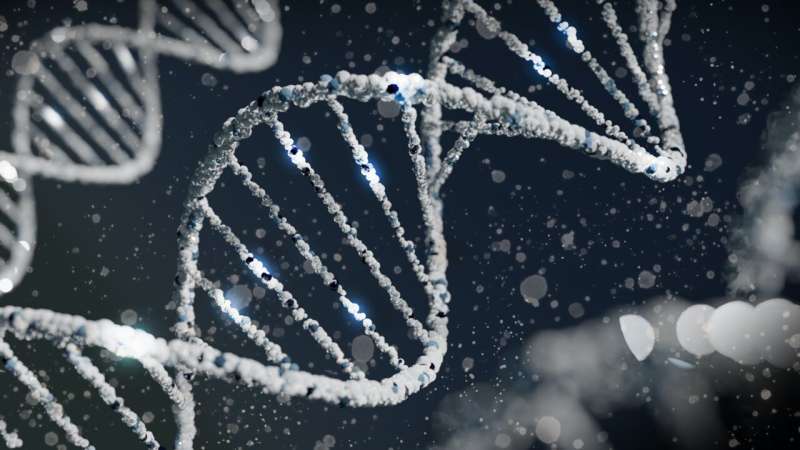
Hereditary changes in genes are often the cause of rare diseases. For example, disease-causing gene variants (PVs) in the HRAS gene cause Costello syndrome and PVs in the KRAS gene cause Noonan syndrome and cardio-facio-cutaneous syndrome. If such PVs only arise during embryonic development in the womb, those affected suffer from a mosaic disease in which both altered and healthy cells are present.
In this context, researchers at the Hannover Medical School (MHH) and the National Cancer Institute (NCI) in the U.S. have, for the first time, analyzed the cancer risk within a special group of young patients. The results make it clear how important close cancer monitoring is, with 20% of those affected being diagnosed with cancer by the age of just 20. Looking at rhabdomyosarcoma alone, the risk of developing the disease was 800 times higher than in the population as a whole.
The findings are published in the journal Clinical Cancer Research.
Special high-risk group
“We were able to include a total of 69 cases in the study. We observed twelve cancers, mainly in young children,” explains Professor Dr. Christian Kratz, Director of the Department of Paediatric Haematology and Oncology at the MHH and initiator of the study. Professor Kratz’s team only included patients with multi-line mosaic RASopathies in the study. RASopathies are a group of developmental disorders caused by a dysregulation in genes of the RAS-MAPK signaling pathway. The study analyzed PVs in the HRAS or KRAS gene.
“A special feature of mosaic RASopathies is that they are disorders that only develop in the embryo during embryonic development. PVs can occur at any time during pregnancy. In this case, we speak of a mosaic, since not all cells carry the change,” explains Gina Ney, a researcher at the NCI in the U.S. In the case of PVs that occur early during embryonic development, different tissues are affected by the mosaic RASopathy. They are referred to in the study as multilineage mosaic RASopathies.
Genetic alterations as a driving force for cancer
The spectrum of PVs typically found in mosaic RASopathies overlaps with the spectrum of gene mutations found in cancers. Rhabdomyosarcomas were diagnosed in seven patients. The patients were between one and 48 months old, with one case of rhabdomyosarcoma detected at twelve years of age.
“It is noteworthy that all seven rhabdomyosarcomas occurred in the urogenital region. This is an important finding that is particularly relevant for the clinical care of those affected,” says Jonas Windrich, a medical student at the MHH who was involved in the study as co-first author. Furthermore, three cases of skin cancer, one Wilms tumor and one case of bladder cancer were observed.
The highest cancer risk was observed in the first years of life.
“There is a particular need for rigorous rhabdomyosarcoma early detection in young children. Regular skin cancer screening is required for adults with this high-risk disease,” emphasizes Stewart, a researcher at the NCI in the U.S.
More information:
Jonas Windrich et al, Cancer in multi-lineage mosaic RASopathies due to pathogenic variants in HRAS or KRAS: a systematic review and meta-analysis, Clinical Cancer Research (2024). DOI: 10.1158/1078-0432.CCR-24-1928
Provided by
Medizinische Hochschule Hannover
Citation:
Genetic mutations in HRAS, KRAS genes linked to childhood cancers (2024, September 26)
retrieved 26 September 2024
from https://medicalxpress.com/news/2024-09-genetic-mutations-hras-kras-genes.html
This document is subject to copyright. Apart from any fair dealing for the purpose of private study or research, no
part may be reproduced without the written permission. The content is provided for information purposes only.


